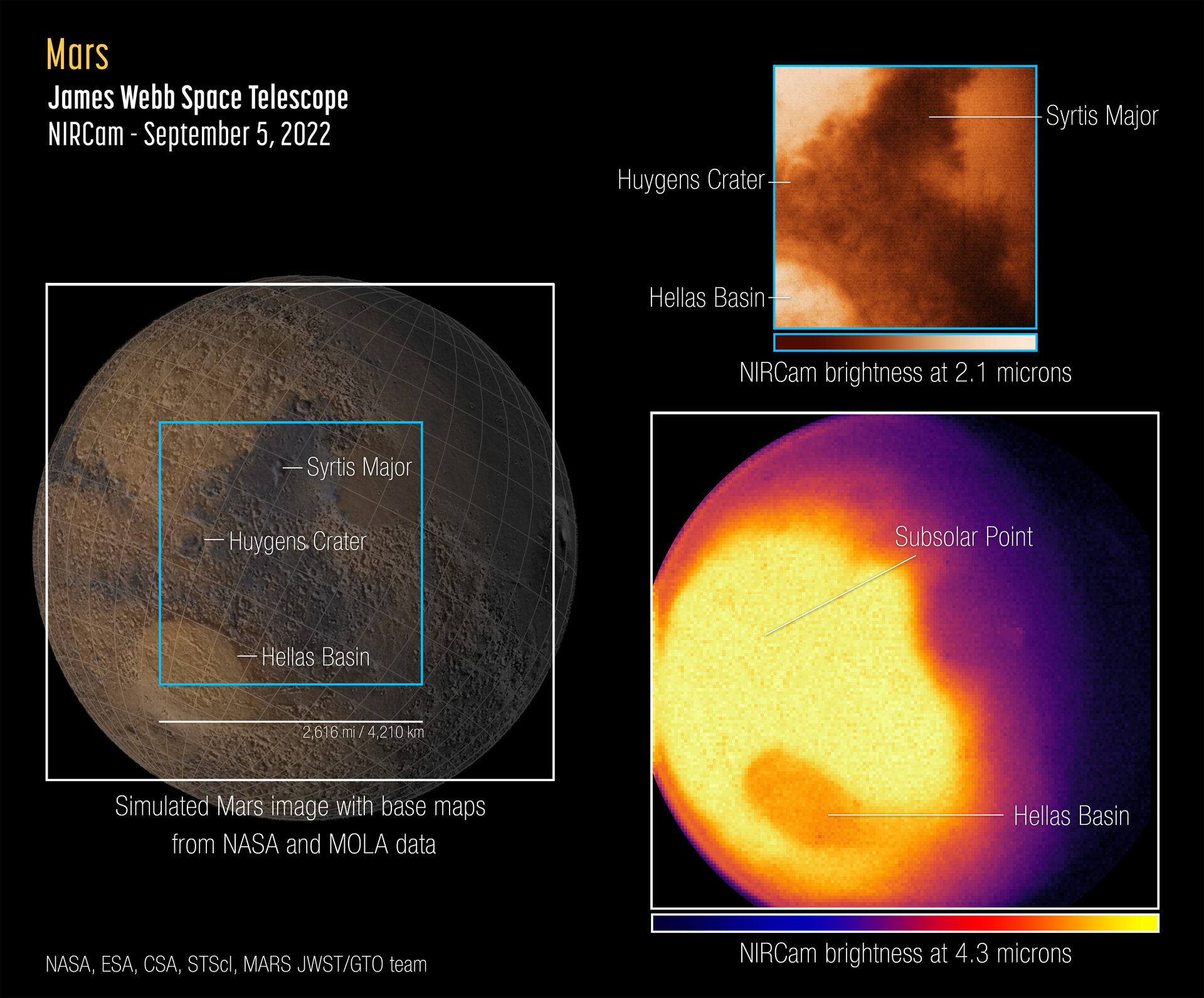
Missing Ancient Martian Lakes in the Data
New research contends that we are vastly understanding just how many lakes there were on Mars back in the red planets more watery period.

JWST Observes Mars Very Carefully
JWST captured a pair of infrared images of Mars taken at two different wavelengths that reveal thermal features due to sunlight.

Review: “Lightyear”
In this week’s review, Erik and Dr. Pamela watched “Lightyear” on Disney+ and found it to be a feel-good movie with good science.

Thirtieth Rocket Lab Electron Launches
On September 15, Rocket Lab launched their thirtieth Electron rocket carrying only the 150-kilogram StriX-1 satellite for Synspective.

Saturn’s Rings are Made of a Broken-Up Moon
Scientists have used computer modeling to determine that Saturn’s rings were created by the interactions of a now-destroyed moon with Titan.

Perseverance Finds an Abundance of Organics
While collecting rock samples from a region on Mars, the Perseverance rover abraded some of the rock, analyzed it with SHERLOC, and found organic molecules.

Non-Dino Extinctions Tied in Time to Volcanic Eruptions
A new paper has associated five other non-dinosaur related extinction events with massive volcanic events that occurred at the same time.

Death From the Skies: Dinosaur Edition
A newly discovered 8-5-kilometers on the ocean floor off the coast of West Africa may be the result a second dinosaur-killing asteroid.

This Week in Space History: SELENE
This week, we look back at an uncrewed lunar mission from JAXA – KAGUYA (SELENE) – which surveyed the surface of the Moon from a very low orbit.

Chinasat 1E Launches on Long March 7A for First Time
China launches Chinasat 1E using a Long March 7A rocket as the launch vehicle for the first time, continuing the transition to China’s new generation of rockets.




 Join the Crew!
Join the Crew!
 Escape Velocity Space News
Escape Velocity Space News